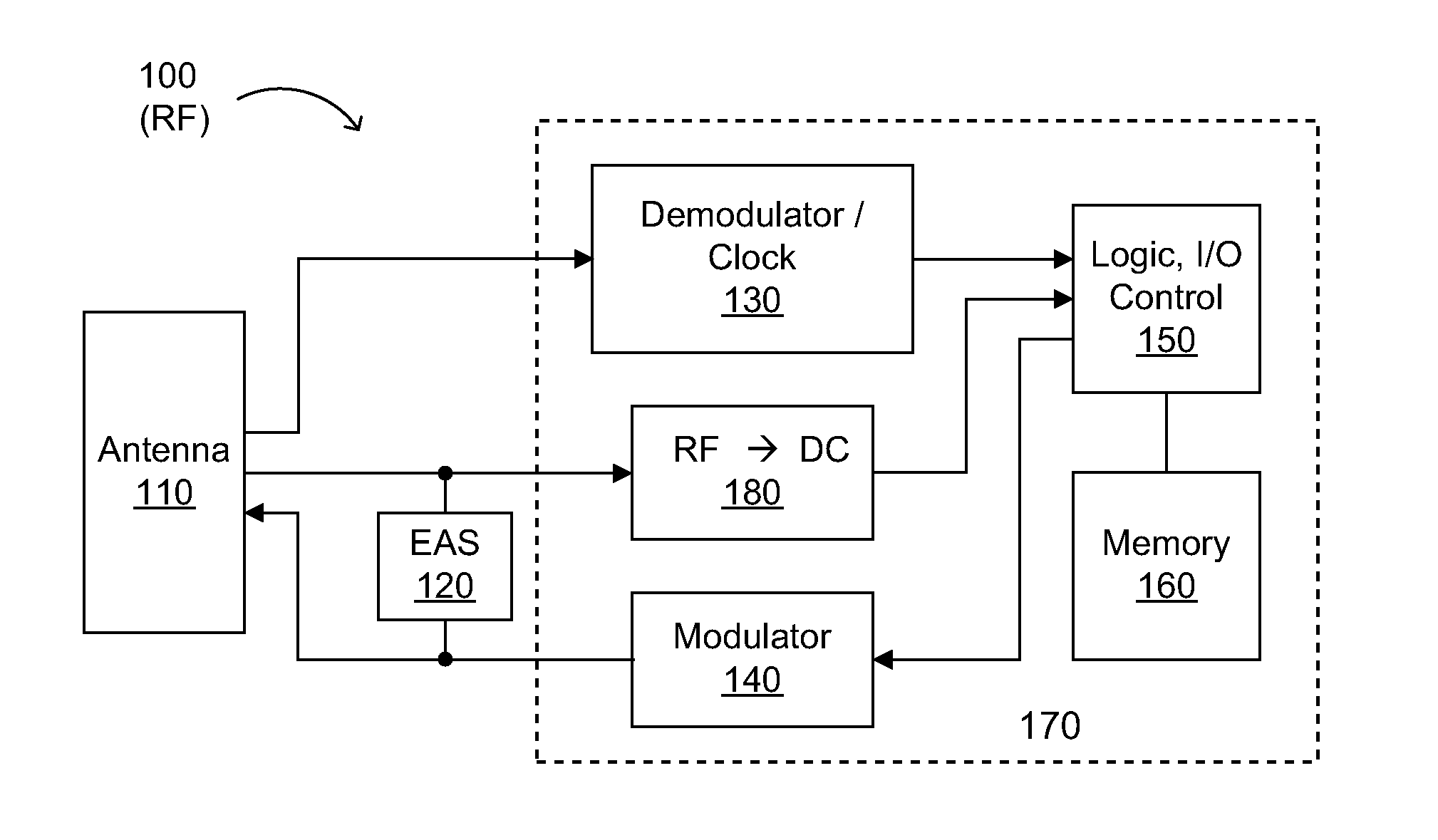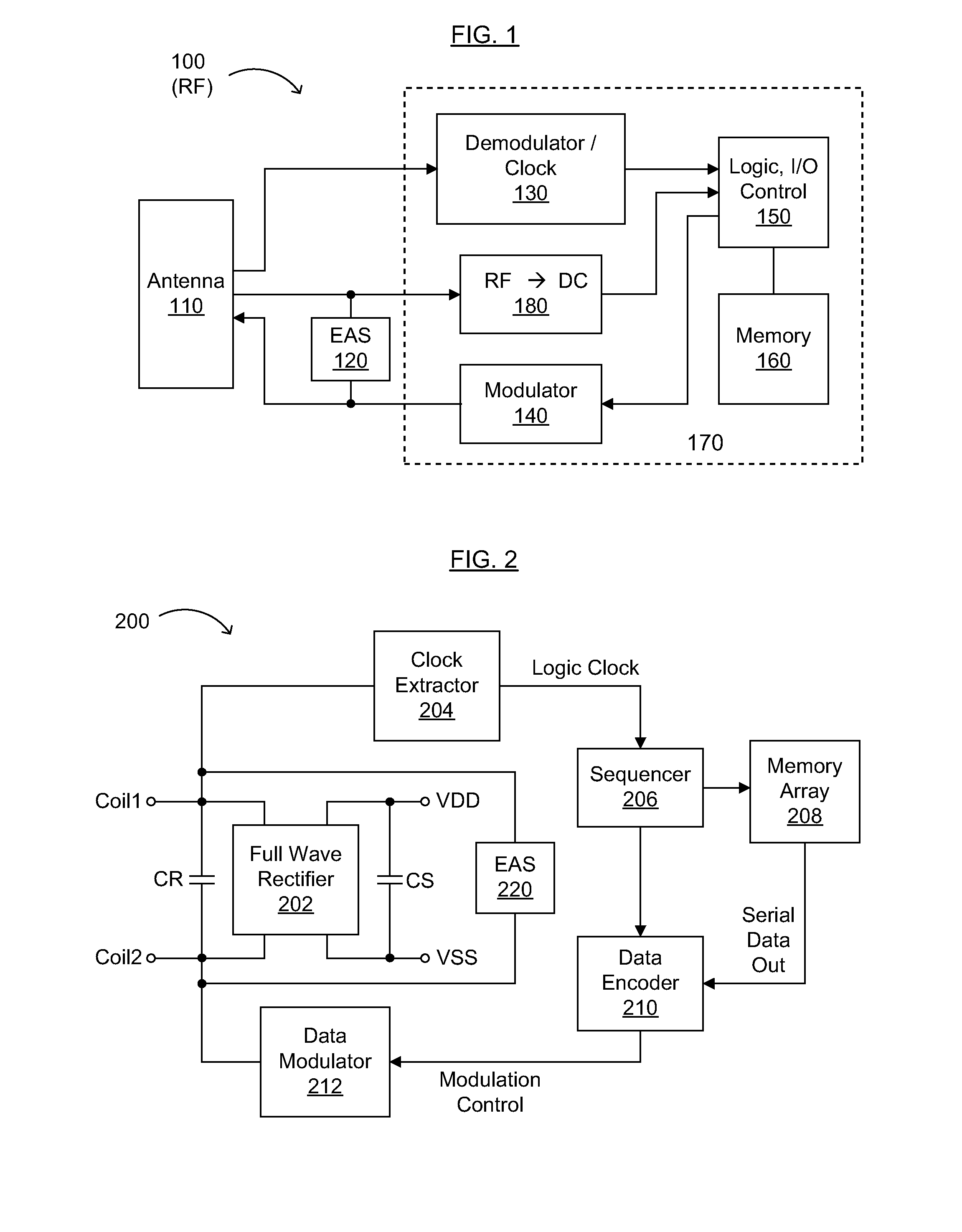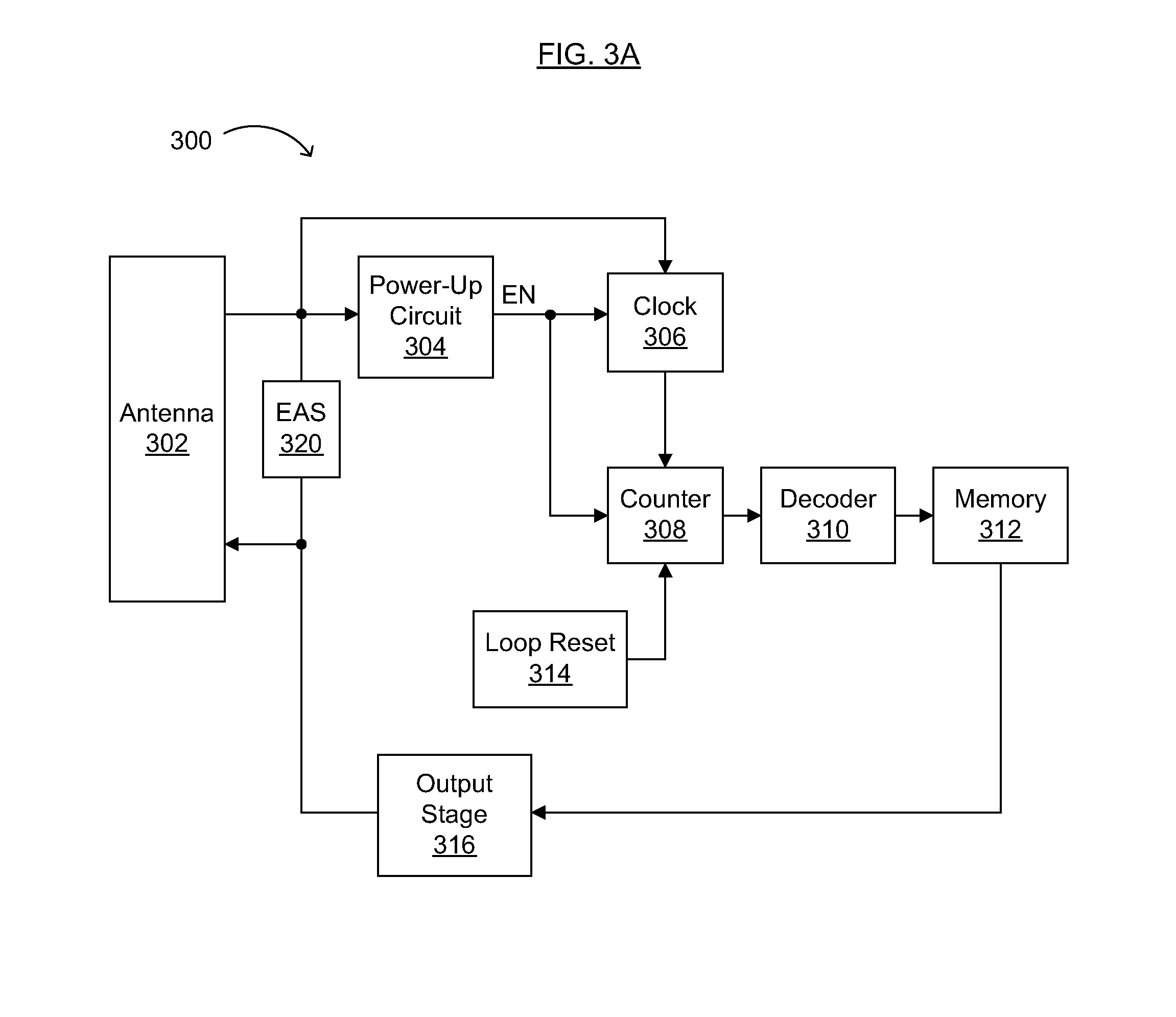Multi-Mode Tags and Methods of Making and Using the Same
a technology of radio frequency identification and multi-mode tags, which is applied in the field of electronic article surveillance and/or radio frequency identification tags, can solve the problems of insufficient storage of information for inventory control and insufficient operation range of rfid tags for anti-theft use, and achieve the effect of simplifying product and inventory management and reducing the cost of performing
- Summary
- Abstract
- Description
- Claims
- Application Information
AI Technical Summary
Benefits of technology
Problems solved by technology
Method used
Image
Examples
third embodiment
[0083]In general, an RFID portion of the dual-mode tag 300 can include an antenna section (e.g., 302), a power-up circuit (e.g., 304), a clock subcircuit (e.g., 306), a counter (e.g., 308), a memory portion (e.g., 312), a decoder (e.g., 310), a loop reset circuit (e.g., 314), and an output stage (e.g., 316). Portions of or all such circuit portions (except, in some embodiments, the antenna 302) can be printable in order to reduce overall system costs.
[0084]The antenna 302 may be implemented using a resonant LC circuit for use at 13.56 MHz, for example, but tunable for use at, e.g.,.8.2 MHz (i.e., at a frequency typical of EAS applications). Alternatively, the antenna may be implemented using a dipole or similar such antenna for 900 MHz (high frequency, or HF) operation or 2.4 GHz (very high frequency, or VHF) operation. Generally, the antenna may be used to provide power for operation of the tag circuitry, and to provide information from the tag to the reader or interrogator. Using ...
working example
[0102
[0103]An existing 13 MHz tag, connected to an antenna tuned to 8 MHz, can function as an RFID tag close to a reader and as an EAS tag at a distance from the reader, as demonstrated by simulation as well as by measurements taken on RFID tag circuitry designed for operation at 13.56 MHz, but tested at 8 MHz. A rectifier circuit with a voltage-controlled turn-on has been designed (see, e.g., U.S. patent application Ser. No. 11 / 521,924) and fabricated using Si ink technology (see, e.g., U.S. patent application Ser. Nos. 10 / 789,317, 10 / 949,013, 10 / 950,373, and 10 / 956,714, filed on Feb. 27, 2004, Sep. 24, 2004, Sep. 24, 2004, and Oct. 1, 2004 respectively [Attorney Docket Nos. IDR0020, IDR0301, IDR0302, and / or IDR0303]) and an externally attached capacitor. The rectifier circuit is configured to prevent the RFID circuitry from affecting the EAS operation at a distance. The 8.2 MHz EAS mode antenna resonated strongly enough to be detected by a commercially available EAS reader (from C...
PUM
 Login to View More
Login to View More Abstract
Description
Claims
Application Information
 Login to View More
Login to View More - R&D
- Intellectual Property
- Life Sciences
- Materials
- Tech Scout
- Unparalleled Data Quality
- Higher Quality Content
- 60% Fewer Hallucinations
Browse by: Latest US Patents, China's latest patents, Technical Efficacy Thesaurus, Application Domain, Technology Topic, Popular Technical Reports.
© 2025 PatSnap. All rights reserved.Legal|Privacy policy|Modern Slavery Act Transparency Statement|Sitemap|About US| Contact US: help@patsnap.com



